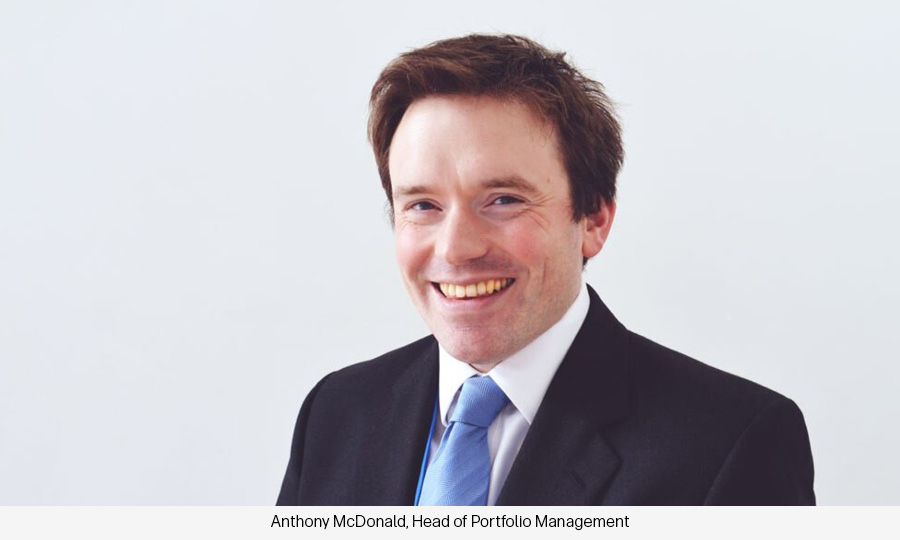As we approach the end of the tax year, cash has offered high rates and risk protection during recent periods of market volatility. Given that, worried investors may be tempted by cash and fixed rate products. Here, our Head of Portfolio Management, Anthony McDonald, highlights why ‘cash distraction’ may now lead to savers missing out on opportunities for investment growth.

Cash rates are higher than we have become used to since the financial crisis. We completely understand why some investors are tempted to reduce investment risk, even if higher inflation does erode the real returns from cash. But we see other assets that also re-priced sharply over 2022 and 2023 and, while bank deposit rates are particularly visible to savers, they could distract from opportunities elsewhere.
Our changing view on cash
We held a positive view on cash in 2022, leading to overweight positions in the multi-asset funds that we run (such as the Risk Managed Portfolios and the Aegon Workplace Default fund). However, even though interest on cash is now much higher, we switched to a negative outlook during 2023, reflecting a particular preference for bonds that's rooted in our long-term, value-based investment philosophy.
For example, in 2023 UK gilt yields also reached their highest level since the global financial crisis in 2008. Similarly, investment grade corporate bond index yields reached levels in 2022 and 2023 that hadn't been seen since 2009. As bond markets moved to these higher yields and values fell, they clearly brought some losses. But current levels look more attractive than for many years and adding positions is an approach in keeping with the general principle of buying assets when they appear cheap.
Consequently, longer-term investors might not be best served in cash to meet long-term financial objectives. While cash clearly has some advantages in low volatility and low risk of loss, we don’t think this is a time to make the decision to forego investment returns as it risks missing a significant opportunity to work towards those goals.
Insipid growth could spell the end for higher interest rates
Interest rates appear to be at restrictive levels that are weighing on the UK’s economic performance. Insipid growth, falling job vacancies and rising unemployment support this view. And inflation is falling, in line with the Bank of England’s objective.
This is a backdrop where we believe interest rates are at, or close to their peak for this cycle. If inflation continues to fall, increasingly restrictive policy is unlikely to be required and interest rate cuts are plausible.
We think this makes it an attractive time to invest in bonds, with the opportunity to lock in those relatively high yields for a prolonged period of time. For example, a ten-year gilt should pay around 4% per year for the next 10 years. In contrast, cash rates are likely to drop quickly if/as interest rates fall.
The risks of anchoring to higher cash rates
The final part of 2023 was a practical example of the risks of anchoring to higher cash rates. Interest rates were unchanged, yet investment markets started to respond to expectations that the Bank of England will cut interest rates in 2024. As a result, the cash return (based on the UK Base Rate) in November to December was respectable at 0.9%, yet represented a missed opportunity compared to UK equities (7.6%) and gilts (8.5%).
This principle is also supported by our historic analysis:
- Firstly, since 1988, interest rates reached what turned out to be peak levels on 6 October 1989 (at 14.9%), 4 June 1998 (at 7.5%) and 5 July 2007 (at 5.8%). Despite the seeming attractiveness of cash rates, in each case UK gilts outperformed over the next three and five years.
- Interestingly in this context, between 3 August 2023, when interest rates reached their current level of 5.25% at the end of 2023, gilts again comfortably outperformed cash.
- More broadly, since that rate peak in 1989, there have been only eight five-year periods (to month end) when gilts and equities have both underperformed cash returns (based on the UK Base Rate). This represents less than 2.5% of all month-end observations.
Considered together, these points suggest that cash is rarely the most attractive instrument for investors seeking long-term growth to support their financial objectives. And that high interest rates do not necessarily challenge that conclusion. At the very core, this reminds us of the much-quoted adage that time in the market typically works better than timing the market.
Past performance isn’t a reliable guide to future performance. The value of an investment can fall as well as rise and isn’t guaranteed. Your clients may get back less than they invest. Opinions are based on the outlook of the Aegon UK Portfolio Management team and shouldn’t be interpreted as recommendations or advice.
